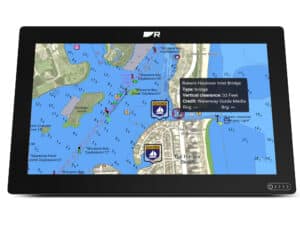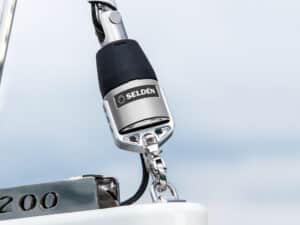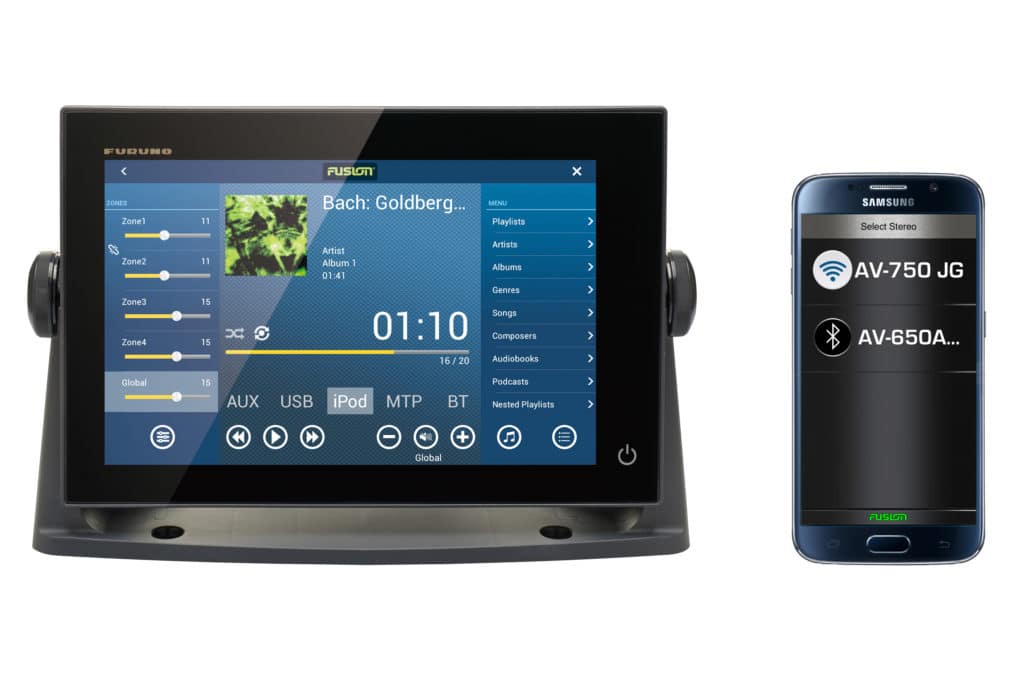
The rising sun begrudgingly illuminated a gray mid-November sky as we sailed from Seattle’s Shilshole Marina toward the majestic San Juan Islands. I stepped belowdecks and fiddled with my iPhone. It was connected via an auxiliary audio cable to the boat’s stereo, and the opening riffs of the Grateful Dead’s “Eyes of the World” flooded the cockpit. I started refilling coffee mugs, but I knew that the music was a far better elixir.
“Orcas, 2 o’clock!” cried Tim. I stepped on deck and saw two dorsal fins submerge, only to see several more surface nearby. Soon fins and tails were punctuating the surface of Puget Sound as the pod swam alongside Dark Star. Sails were lowered, and the bow found its way into the thin breeze as our entire crew stood mesmerized by the sight of 20-some orca whales circling our boat, the Seattle skyline still visible over my right shoulder. And while we cut speed, no one even considered lowering the stereo’s volume, as our guests seemed as grateful for the tunes as our crew was.
That’s Entertainment
Marine entertainment systems come in a variety of packages, ranging from a simple audio control head (picture a car stereo) with two speakers to elaborate installations using an assortment of amplifiers, subwoofers and other accessories designed to make your auditory experiences rich, clear, and as close to a live performance as your vessel’s acoustics allow. Depending on your plans and entertainment needs (read: cruising with or without kids), these systems can also involve TV screens. Although signal reception can often be spotty without a dedicated TV receive-only antenna, a good movie works just fine on a rainy afternoon or at bedtime.
Whether or not you bring little ones along, for most sailors, a good marine entertainment system begins with a great-sounding stereo system that can deliver tunes both on deck and down below. Component-wise, most systems are fairly similar to car-stereo equipment, albeit with different protective packaging.
As with all stereo systems, speakers are the single most important ingredient affecting sound quality. Speakers are typically sold as either two-way or three-way models. Two-way speakers sport a woofer and a tweeter, while three-way speakers, designed to create a more segregated sound, offer a woofer, a midrange cone and a tweeter. Depending on the kind of music you enjoy, a nondirectional subwoofer can add significantly more bass. Modern subwoofers can be fully waterproof and as small as a shoebox, allowing them to be fitted almost anywhere.
While home-audio speakers can use fragile, absorptive and decidedly not IP-rated speaker-cone materials, such as paper, silk and other fabrics, marine-specific speakers must be built out of durable, hydrophobic, UV-resistant materials, such as polypropylene and waterproof paper. To ensure a long life span, some companies build tweeters out of titanium and treated silk, but polypropylene has long been the industry standard for marine-specific speaker cones.
“We’re stuck with polypropylene because it’s stiff enough and waterproof enough,” says Bill Pieklik, Poly-Planar’s director of sales and operations. “Unless you’re sitting side by side with home-audio and marine speakers, I doubt you’d hear the difference.” And while some sailors have had luck running a standard car-stereo audio control head and speakers belowdecks, be advised that this equipment will likely not last as long as marine-specific audio gear. Moreover, it’s never wise to fit car-stereo speakers into your cockpit, as these will be ruined as soon as they get wet.
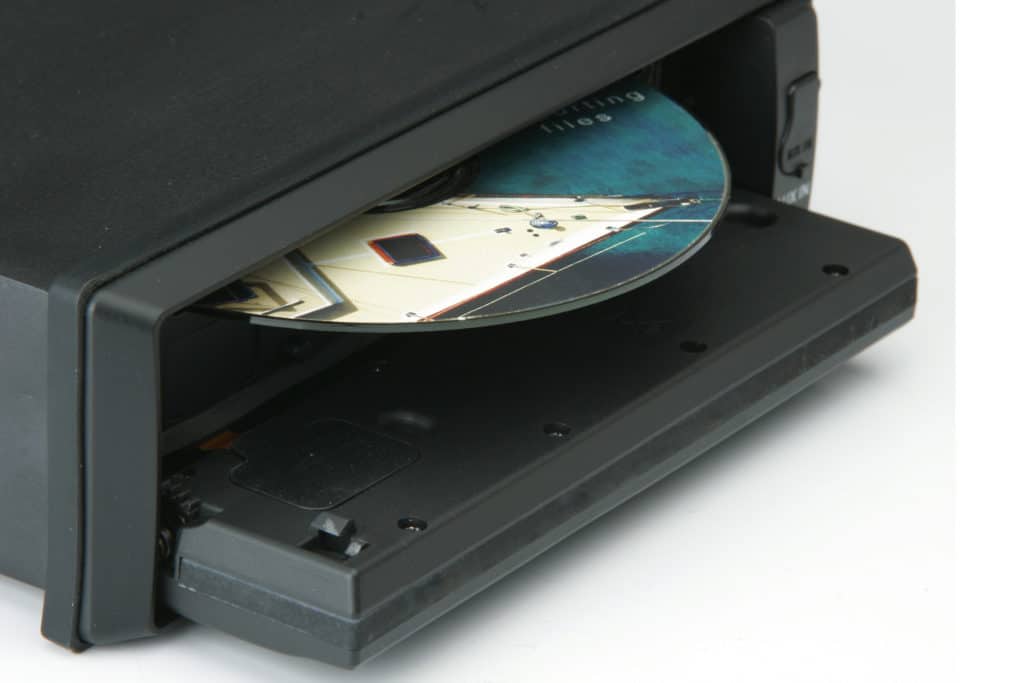
On the Small Screen
While most long-distance cruising sailors forgo broadcast television service when offshore, plenty of coastal cruisers enjoy some evening screen time. Depending on the exact equipment involved, marine stereos can easily network with TVs and play audio channels over the boat’s speakers, rather than relying on the TV’s significantly smaller and less powerful speakers. Should your cruising itinerary take you outside of television-signal range, some audio control heads, including models from Aquatic AV and Fusion, can play both compact discs and DVDs. Alternatively, sailors can send their audio control head’s DVD signal to their MFD via the video-in port, rather than carrying a dedicated TV screen — and they can do so while enjoying the audio channels on their stereo system.
Given the amount of technology that comes bundled in a contemporary audio control head, it’s not surprising that some manufacturers use microprocessors to handle the stereo’s heavy lifting. This also allows manufacturers to push out updates and additional features (much like on a smartphone), which keeps your system running smoothly and helps “future-proof” your investment. If the control head is so designed, a user can access these updates on the Internet, via a PC, and locally download the software to a USB flash drive, which can be used to transfer the update to the stereo.
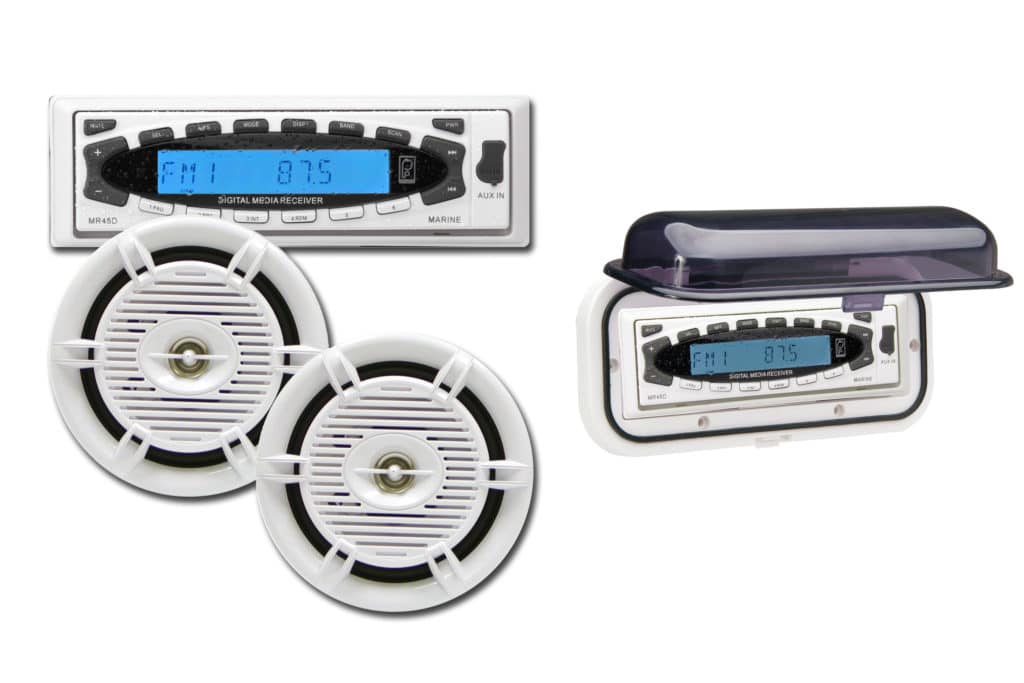
Size Counts
While every cruiser has different auditory needs, vessel size has a big impact on the appropriate kinds of equipment. “Most 30-footers use a pair of speakers, one subwoofer in the saloon, one amplifier and an audio control head unit of the owner’s choice,” says Todd Crocker, general manager of Fusion Entertainment USA. On a 50-footer, he says, you might have three or four pairs of speakers, with amplifiers and subwoofers, or you might have two systems.
“The main system might have two to three pairs of speakers, amplifiers, subwoofers and a head unit, and then you might have a discrete system that’s dedicated to the main cabin, with a DVD player that’s connected to a TV screen, a pair of cube speakers and subwoofers,” says Crocker. “It’s all a matter of taste.”
Much like car stereos, marine-audio systems are designed to be ever expandable, allowing audiophiles to get creative. Additionally, remote controls and apps are available that can give you access to your music from the helm or the V-berth.
As with car stereos, each manufacturer incorporates different features and connectivity options in their audio control heads. For example, some companies, including Aquatic AV and Fusion, build audio control heads that accept a smartphone or MP3 player inside the stereo’s waterproof and shockproof chassis, thus protecting your expensive device. More recently, the conversation has shifted to controlling stereos through a multifunction display, a niche that Fusion currently dominates thanks to its now-industry-standard Fusion-Link. This software, which resides on an MFD’s operating system, uses an NMEA 2000, Ethernet or Wi-Fi connection to allow the MFD to control a Fusion stereo. And while Fusion is owned by Garmin, the Olathe, Kansas-based technology giant lets other MFD manufacturers — including B&G, Furuno and Raymarine — embed Fusion-Link software into their operating systems, thus allowing sailors of all stripes to use their MFD as a centralized jukebox. Manufacturers also commonly bundle wireless connectivity options, including Bluetooth, into their audio control heads, allowing users to pair their smartphones, tablets and PCs with their boat’s stereo system. Additionally, many stereo manufacturers still incorporate auxiliary ports in their audio control heads, enabling users to access their device’s music library via a simple cord, much like I did aboard Dark Star.
Given the popularity of streaming music services such as Spotify, Pandora, Apple Music and Google Play Music, many cruisers use their smartphones and tablets to stream cloud-based content on their stereos, provided, of course, that cellular connectivity — typically limited to just a few miles offshore — exists. Likewise, users can stream satellite radio via their smartphone or tablet to their onboard stereo, as long as they can receive a signal from the orbiting satellite, which aims its service at terra firma, not Big Blue.
If you rely on cloud-based content or satellite radio to keep your foot tapping while underway, understand the limitations of your coverage footprint, and be sure to have locally stored music as well, either on a mobile device or on your PC. Note that while PCs have the ability to store and play music, stereo manufacturers see computers as supporting technology, not as a direct competitor. “You can have all of your music on your PC, but you still need to drive the speakers,” says Pieklik, who advises that PCs simply don’t have enough juice. “You can’t get away from us!”
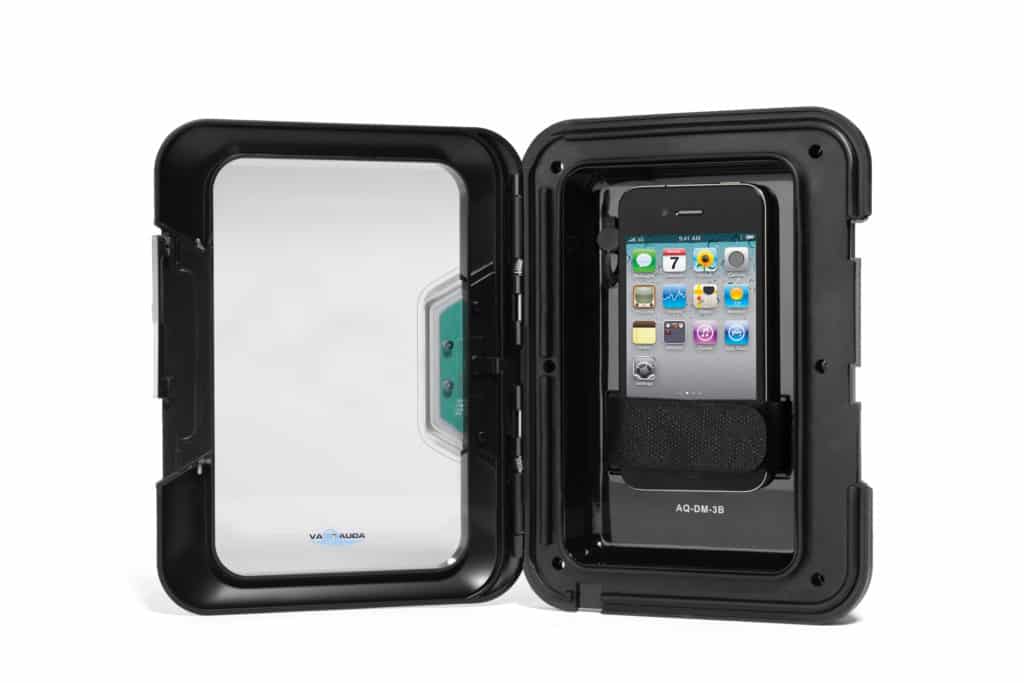
Just Do It
Installation is the final big consideration for a marine entertainment system. Depending on the complexity of your system, installation can be tackled either as a DIY project or as a task for professionals.
“If you’re comfortable cutting holes in your boat, you’ll be fine,” says Pieklik. Irrespective of who is doing the work, however, top marine-electronics shops recommend using flat, covered, 16/2 double-insulated marine-grade wire that’s shielded against RF interference, which can cause annoying buzzing.
As for the future of marine entertainment, Crocker envisions a tomorrow where a single audio control head can pipe content from different audio sources into different onboard zones. Additionally, Crocker believes that the word “analog” will be absent from the marine-entertainment lexicon in five years, usurped by digital switching, controls and even streaming of online multimedia content from service providers such as Netflix.
Still, plenty of us head out of port intent on leaving the “real world” astern. We want to enjoy time with friends, family and our favorite music. If you fall into this category, rest assured that while today’s marine entertainment systems can be expanded into elaborate, multizone installations, they can also remain as simple as a pair of speakers, an audio control head and some CDs. And while there are no guarantees that your music will attract the attention of roving orcas, you can bet your last shackle that onboard tunes can enhance almost any boating experience, be it a soggy Pacific Northwet [sic] delivery or a starlit evening of Caribbean gunkholing.
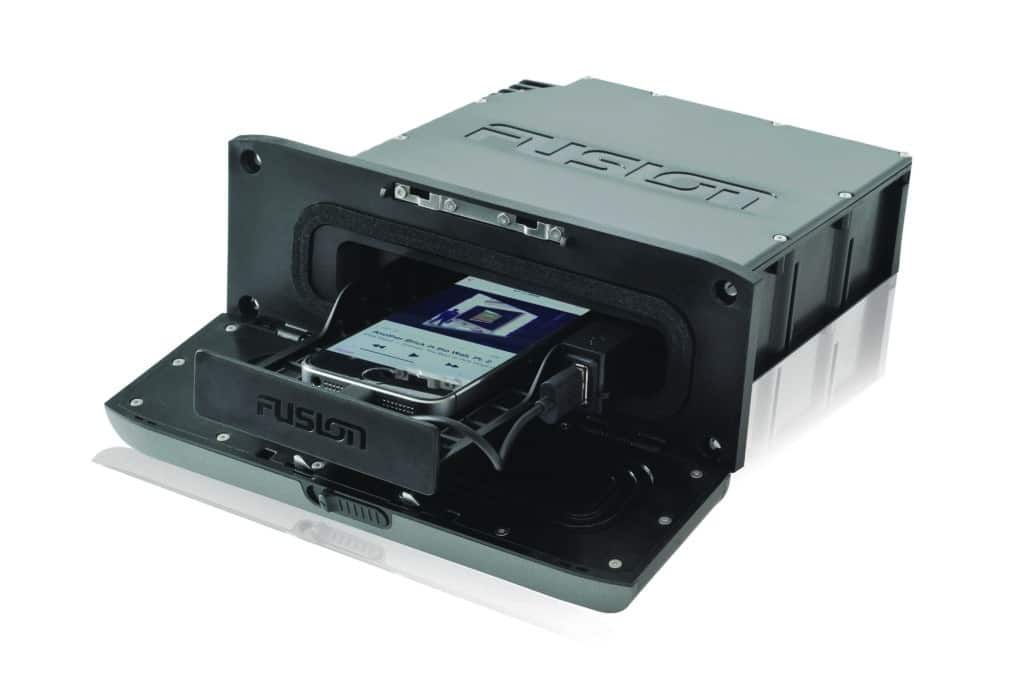
David Schmidt is CW’s electronics editor.



